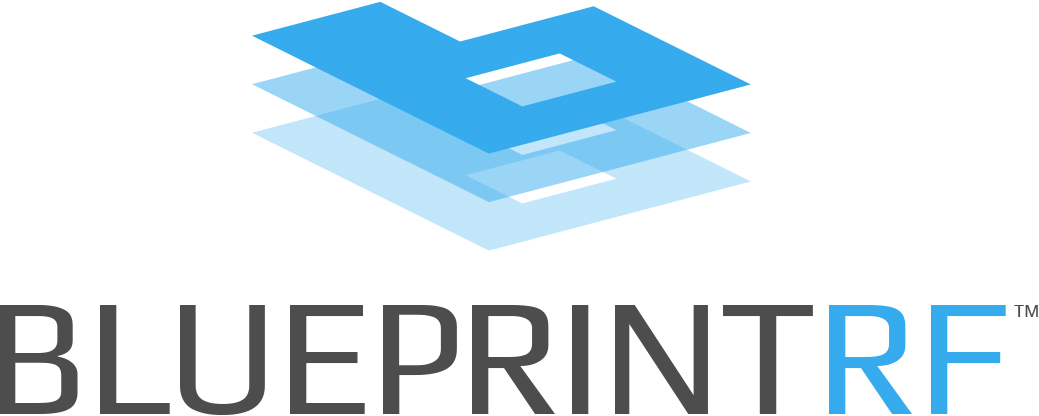Your Guide to Building a Guest WiFi Network That Can Help You Earn 5-Star Reviews
A guest WiFi network creates a separate and secure internet connection specifically for your visitors, running parallel to but isolated from your hotel’s main operational network. This dedicated setup ensures your guests enjoy reliable connectivity throughout their stay while keeping your critical business systems and data protected.
For hotels and hospitality businesses, this network separation has become essential – it delivers the high-speed internet access modern travelers expect while maintaining the security standards your operation requires.
Just as you wouldn’t give guests access to your back office or maintenance areas, this network separation ensures guests can freely surf, stream, and work online without accidentally accessing sensitive hotel systems or data.
Guest WiFi Access: A Valuable Asset
Hotel WiFi connectivity is foundational to the guest experience. One study revealed compelling statistics: 92% of hotel guests expected reliable, secure, WiFi when visiting a hotel. Even more compelling, about two-thirds of guests began using a hotel’s WiFi within seven minutes of check in.
The stakes are especially high for hotels, with one survey reporting that 81% of guests experienced poor WiFi connections during their recent hotel stays. This dissatisfaction with WiFi connectivity can impact a property’s reputation and guest loyalty, making robust WiFi infrastructure not just an amenity but a key expectation about modern hospitality operations.
So, do your hotel guest WiFi solutions consistently meet the expectations of digitally connected guests? Here, we break down the best practices and fundamentals on how to create a guest WiFi network as well as common advantages and disadvantages of guest WiFi.
How to Create a Guest WiFi Network
Creating a secure and reliable guest WiFi network requires careful planning and implementation, especially in hospitality environments. The following approach outlines essential steps and considerations for building an effective guest WiFi network.
Network Design Considerations
Before beginning the physical implementation, several crucial WiFi network design factors should be evaluated to ensure optimal network performance. These foundational elements will shape the entire network architecture and can help determine its long-term success.
Surface Area and Layout
The total surface area of your property is the primary factor in determining network scale. Each area requires consideration of structural elements, including walls, columns, and other features that may interfere with signal propagation.
Capacity Planning
Calculate the maximum number of concurrent users based on expected occupancy and usage patterns. Different areas of your property may require varying levels of bandwidth based on anticipated usage. For instance, getting WiFi in every room versus conference rooms and business centers takes a different strategic approach.

Implementation Steps
Building a robust guest WiFi network follows a structured process that ensures coverage, security, and performance. The implementation phase requires attention to detail and coordination between various technical components to help create a seamless, reliable network infrastructure.
1. Site Survey and Assessment
A site survey kicks off the WiFi network planning process, and it’s important to get it right. During this phase, network engineers walk every square inch of the property to understand exactly how WiFi signals will behave in your unique space. They’ll map out where signals might get blocked, where they’ll need to be strongest, and the best spots to place equipment for optimal coverage.
Think of it as creating a detailed blueprint of your property’s digital landscape. Using signal mapping tools, engineers can visualize exactly how WiFi signals flow through your building, spotting potential trouble spots before they become problems.
They’ll check for things that might interfere with signals – from elevator shafts to kitchen equipment – and identify high-traffic areas like lobbies and conference rooms that’ll need extra bandwidth. This assessment helps ensure your network design matches your property’s specific needs and guest expectations.
2. Network Segmentation
Network segmentation creates a critical separation between guest and operational systems. Through advanced VLAN configuration, distinct network environments operate independently while sharing the same physical infrastructure.
This segmentation extends to separate DHCP servers, DNS configurations, and dedicated bandwidth allocation, helping to ensure guest traffic never intersects with sensitive hotel operations. Modern segmentation can also include:
- Quality of Service (QoS) policies for different user groups
- Role-based access control for staff and administrators
- Separate authentication mechanisms for guests and employees
- Isolated IoT device networks for smart room technologies
3. Access Point Deployment
Strategic access point placement requires balancing coverage needs with aesthetic considerations. Access points should be positioned to maximize signal strength while minimizing visual impact. Key factors include user density patterns, potential interference sources, and building materials to optimize placement.
Each access point should be configured to work in harmony with nearby units, creating seamless coverage throughout the property. The deployment process includes:
- Installation of enterprise-grade access points with MU-MIMO capability
- Configuration of mesh networking for redundancy and coverage optimization
- Implementation of seamless roaming protocols
- Setup of automatic channel selection and power adjustment features
4. Initial Testing and Validation
Before the network goes live, comprehensive testing should validate all aspects of the guest WiFi solution. This includes:
- Coverage verification through detailed site walks
- Performance testing under various load conditions
- Security protocol validation
- Roaming and handoff testing between access points
- Bandwidth stress testing in high-density areas
5. System Integration
The final implementation step involves integrating the guest WiFi network with existing hotel systems:
Each implementation step requires careful documentation and validation to ensure the network meets both current needs and future scalability requirements. Regular reviews and adjustments during the implementation process can help optimize the network for specific property requirements and guest expectations.
Security Implementation
The security framework of a guest network requires multiple layers of protection working in harmony to protect both guest data and hotel operations. A comprehensive WiFi security implementation can include:
- WPA3 encryption provides enhanced security where implemented
- Custom-designed captive portals that manage guest authentication processes while enabling valuable data collection opportunities
- Advanced firewalls and access control lists that create strict boundaries between guest and operational networks
- Real-time monitoring systems that provide immediate alerts about potential security threats or unusual network activity
- Intrusion detection systems (IDS) that continuously analyze network traffic patterns to identify and flag suspicious behaviors
- Detailed security logging and audit trails that support compliance requirements and enable security analysis
This multi-layered security approach can help ensure protection against both current and emerging cyber threats while maintaining the seamless guest experience that modern travelers expect.
Network Optimization
Network optimization is an ongoing process that begins with initial configuration and continues throughout the network’s lifetime. Channel planning should be fine-tuned to minimize interference between access points while implementing advanced QoS policies that ensure fair bandwidth distribution. Load balancing and band steering technologies work together to direct devices to the most appropriate access points, preventing any single point from becoming overwhelmed.
Load balancing intelligently distributes network traffic across multiple access points to prevent system overload, while band steering automatically guides devices to the optimal frequency band (either 2.4 GHz or 5 GHz) based on device capabilities and network conditions. Together, these technologies can ensure efficient network performance by preventing bottlenecks and optimizing connection quality for all guest devices.
Ongoing Maintenance
Regular maintenance can ensure guest networks continue to perform at peak efficiency. This includes scheduled firmware updates, security protocol reviews, and performance monitoring.
Continuous analysis of network usage patterns can enable proactive adjustments, ensuring guests always experience optimal connectivity. Round-the-clock technical support remains essential to address any issues that may arise, maintaining the highest levels of guest satisfaction.
The result is a robust, secure, and high-performing guest WiFi solution that meets the demands of modern travelers while protecting hotel operational integrity.

Pros and Cons of Guest WiFi Networks
Guest WiFi networks have become an important component of modern hotel operations, offering both significant benefits and notable challenges. Understanding these factors is essential for hoteliers making infrastructure decisions.
Advantages of Guest WiFi Networks
The implementation of a dedicated guest WiFi network provides hotels with several strategic benefits that extend beyond basic internet connectivity:
- Enhanced Guest Experience: A majority of guests now expect free WiFi from hotels, making seamless connectivity essential for guest satisfaction and repeat bookings
- Competitive Advantage: Properties with superior WiFi networks attract more bookings, with 84% of hotel guests indicating that free WiFi directly influenced their accommodation choices in one study
- Marketing and Data Insights: Customized login portals enable valuable data collection about guest preferences and behaviors, facilitating targeted marketing and service improvements
- Operational Efficiency: Separate guest networks prevent visitor traffic from impacting critical hotel systems, ensuring smooth operations and staff communications
Disadvantages of Guest WiFi Networks
While guest WiFi networks offer numerous benefits, they also present several challenges that hotels must carefully consider and address:
- Security Risks: From hackers to unauthorized users, guest networks face daily security challenges. Keeping these networks safe requires round-the-clock monitoring and regular security updates to stay ahead of emerging threats
- Resource Strain: Running a hotel-wide WiFi network takes considerable resources. Between managing bandwidth during peak times, keeping equipment up to date, and maintaining skilled IT staff, the operational demands can be significant
- Technical Hurdles: Dead zones, slow connections, and signal interference are common headaches. Staying on top of system updates and coverage issues requires constant attention to maintain the service quality guests expect
- Financial Investment: Quality doesn’t come cheap. From initial setup costs to ongoing maintenance, technology upgrades, and staff training, providing reliable guest WiFi represents a significant line item in any hotel’s budget
- Regulatory Obligations: Today’s digital landscape comes with strict rules. Hotels need to stay compliant with data protection laws, maintain proper usage records, and ensure guest privacy: all while providing seamless service
Understanding these advantages and disadvantages helps hotels develop effective strategies for implementing and managing their guest WiFi solutions while maximizing benefits and minimizing potential drawbacks.
Design an Enhanced Hotel Guest WiFi Network
Like many hoteliers, you understand the importance of scalable systems that integrate with IoT and smart hotel features. A modern system supports guest activities while decreasing security risks and downtime.
Features, like guest insights and analytics, assist marketing objectives and help you prepare for the future. Take the next step and build a hotel guest WiFi network that supports secure and reliable connectivity using best practices and installation strategies.
Contact Blueprint RF to learn more.











